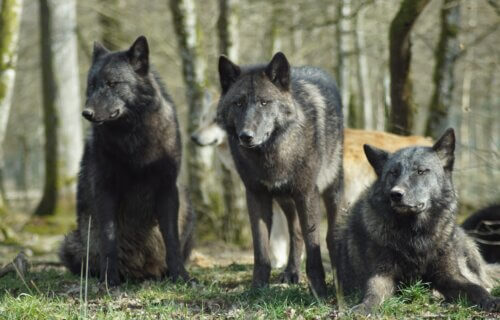MADRID, Spain — Attacks by large, predatory animals are on the rise worldwide over the last 50 years. However, the likelihood of dying during an encounter with a wolf or bear in the forest depends heavily on why that person is walking through nature — and that has a lot to do with their income.
Specifically, the international team finds people in high and low-income nations both run into deadly predators, but they do so under very different circumstances. Attacks in high-income countries more commonly take place during recreational activities, such as hiking, camping, or dog-walking. Meanwhile, nearly 90 percent of all attacks in low-income countries take place while people are engaging in “livelihood-related activities” — like farming, fishing, or grazing livestock.
Overall, wild cats and dogs are responsible for more predatory attacks than other animals. Bears are more likely to attack someone after being surprised, to defend their cubs, or in food-related interactions like scavenging human food at a campsite.
As for who is at the greatest risk, results show most fatal attacks occur in lower-income countries where tigers and lions live.
1 in 3 animal attacks is fatal
The findings are based on almost 50 years of data from 1970 to 2019. An international team identified 5,089 reported attacks by large carnivores that resulted in harm. A third of these attacks (32%) were fatal.
The number of reported attacks increased over the 49-year period, particularly in impoverished nations. Frequency and context depends on socioeconomic and environmental factors, the researchers add. Humans and animals are increasingly having to co-exist because of climate change, but researchers hope these latest findings can help people better understand these wild animals.
“When human recreational and/or livelihood activities overlap with large carnivore ranges, it is crucial to understand how to live with species that can pose threats to humans,” says Vincenzo Penteriani from the National Museum of Natural Science (CSIC) of Spain in a media release.

Where do most animal attacks take place?
India is the most dangerous country in terms of carnivore attacks, where almost three-quarters (72%) of these incidents occur, followed by southeastern Africa (14%). Leopards were among the most frequently involved big cats, with children being the victims in most encounters, the research shows.
The global survey covered 12 species of carnivores in three families — bears, big cats, and big dogs — including wolves and jackals. Dr. Penteriani and his colleagues scoured published and unpublished scientific papers, web pages, and news reports.
They suggest that preventative measures should be tailored to the socioeconomic context. In wealthy countries, these could include campaigns to educate visitors and residents in large carnivore areas about risky behaviors and how to avoid dangerous encounters.
In lower-income countries, co-existence with large carnivores is mostly involuntary. Zones that separate humans and livestock, expanding protected areas, and restoring habitat connectivity would be more appropriate strategies. Initiatives will be challenging as the global population of humans will reach almost 10 billion by 2050, the scientists warn.
“Factors triggering large carnivore attacks on humans depend on the combination of local socio-economic and ecological factors, which implies that measures to reduce large carnivore attacks must consider the diverse local ecological and social contexts,” Penteriani concludes.
The study is published in the journal PLOS Biology.
South West News Service writer Mark Waghorn contributed to this report.


This is one of the most stupid studies I”ve ever seen. Being attacked and killed by an animal in the wild has nothing to do with income and everything to do with location. Just ask the guy whose wife was eaten by a shark in Hawaii or the fisherman in Mexico who saw their pal killed by a Great White.